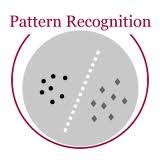Suppose Alice has a distribution $P$ and Bob has a distribution $Q$. Alice wants to generate a sample $a\sim P$ and Bob a sample $b \sim Q$ such that $a = b$ with has as high of probability as possible. It is well-known that, by sampling from an optimal coupling between the distributions, Alice and Bob can achieve $Pr[a = b] = 1 - D_{TV}(P,Q)$, where $D_{TV}(P,Q)$ is the total variation distance. What if Alice and Bob must solve this same problem without communicating at all? Perhaps surprisingly, with access to public randomness, they can still achieve $Pr[a = b] \geq \frac{1 - D_{TV}(P,Q)}{1 + D_{TV}(P,Q)} \geq 1-2D_{TV}(P,Q)$. In fact, this bound can be obtained using a simple protocol based on the Weighted MinHash algorithm. In this work, we explore the communication-free coupling in greater depth. First, we show that an equally simple protocol based on Gumbel sampling matches the worst-case guarantees of the Weighted MinHash approach, but tends to perform better in practice. Conversely, we prove that both approaches are actually sharp: no communication-free protocol can achieve $Pr[a=b]>\frac{1 - D_{TV}(P,Q)}{1 + D_{TV}(P,Q)}$ in the worst-case. Finally, we prove that, for distributions over $n$ items, there exists a scheme that uses just $O(\log(n/\epsilon))$ bits of communication to achieve $Pr[a = b] = 1 - D_{TV}(P,Q) - \epsilon$, i.e. to essentially match optimal coupling. Beyond our theoretical results, we demonstrate an application of communication-free coupling to speculative decoding, a recent method for accelerating autoregressive large language models [Leviathan, Kalman, Matias, ICML 2023]. We show that communication-free protocols yield a variant of speculative decoding that we call Drafter-Invariant Speculative Decoding, which has the desirable property that the output of the method is fixed given a fixed random seed, regardless of what drafter is used for speculation.
翻译:暂无翻译



